Physics - Electrostatics, Drift Velocity, Circuits
1/42
Name | Mastery | Learn | Test | Matching | Spaced |
|---|
No study sessions yet.
43 Terms
Difference between EMF and Terminal potential difference
See pic
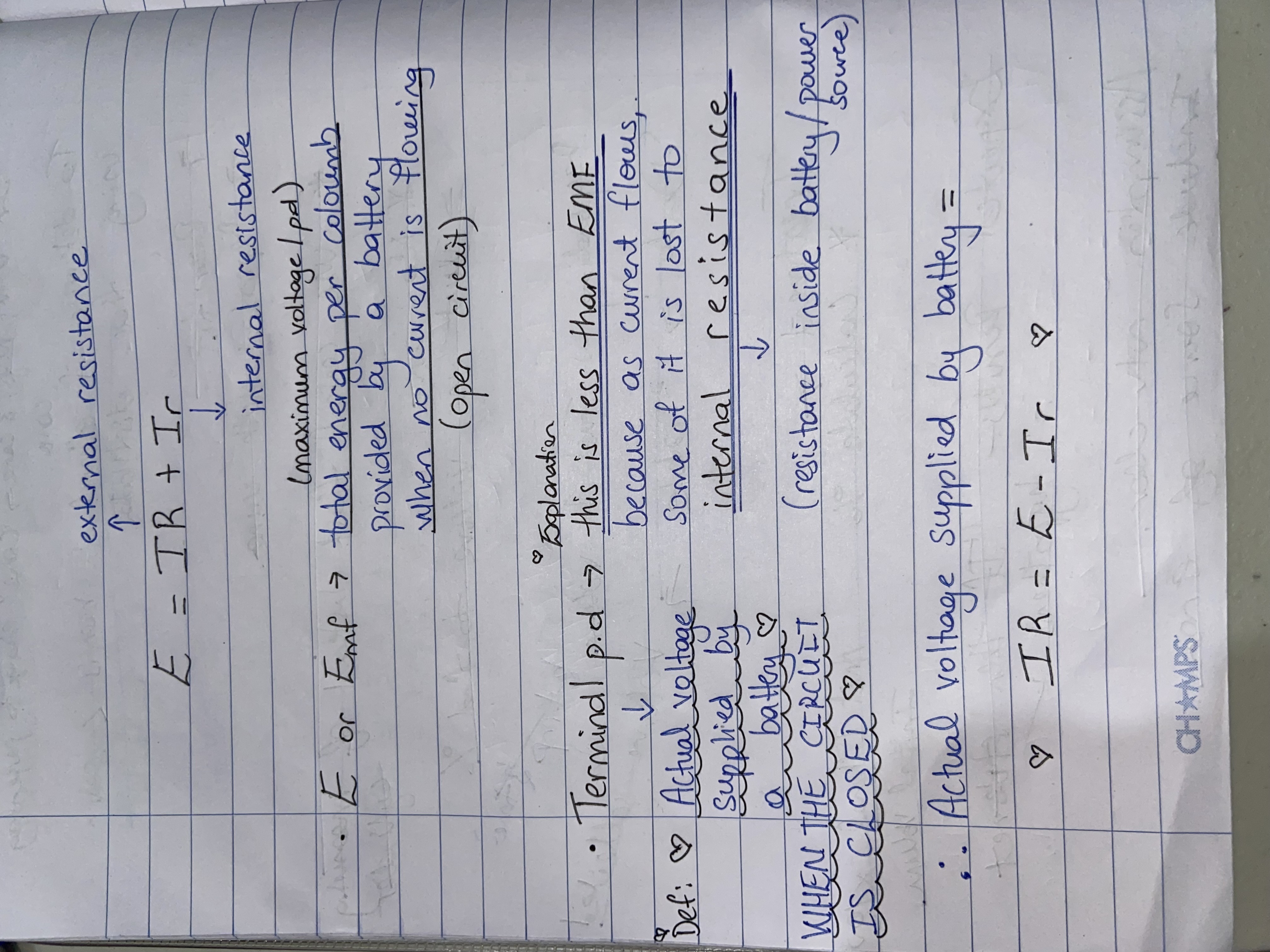
Define watt
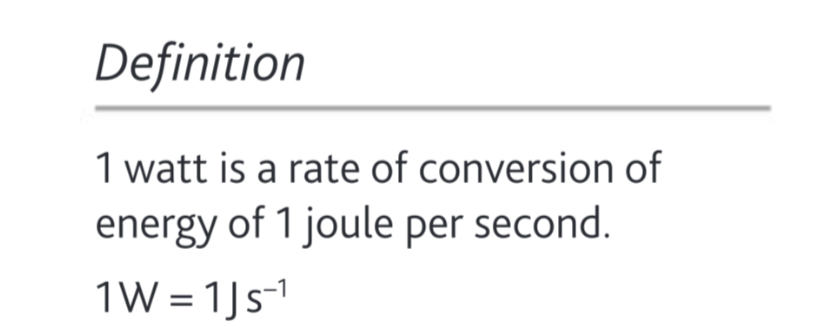
Define current, charge (give equation too) and coloumb
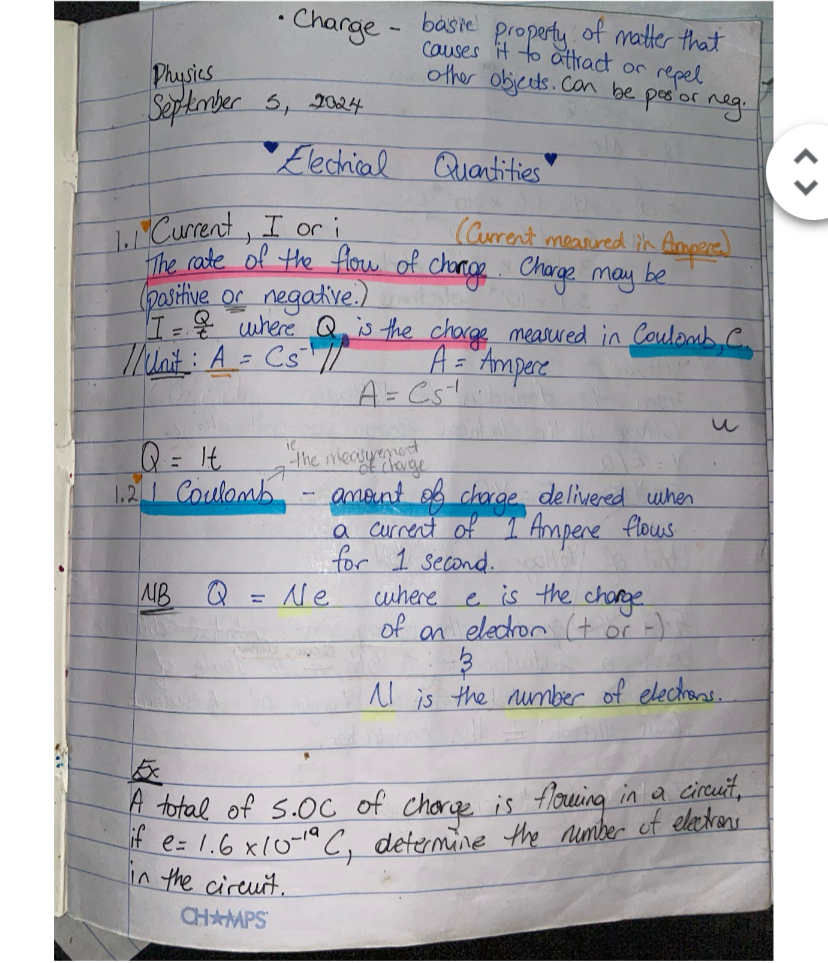
Define potential difference

Define volt and coulomb
See pic
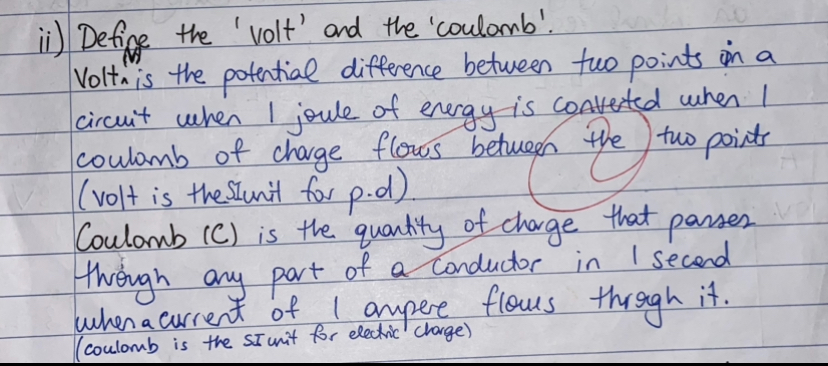
In terms of circuits, Give equation for voltage using work (W)
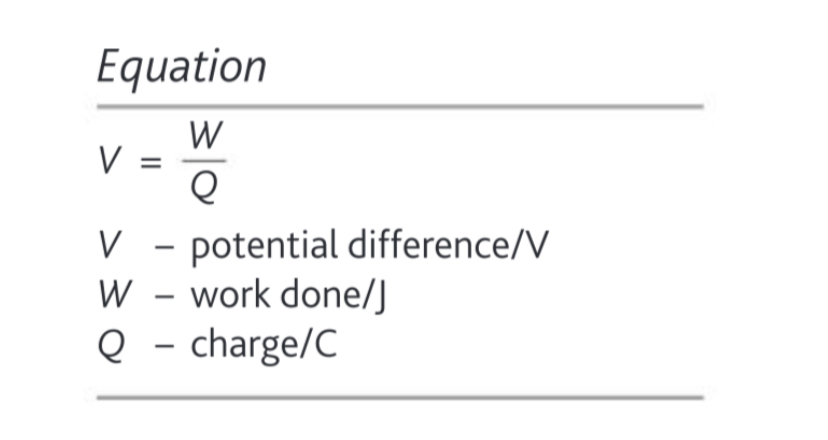
State Kirchhoff’s Laws
See pic
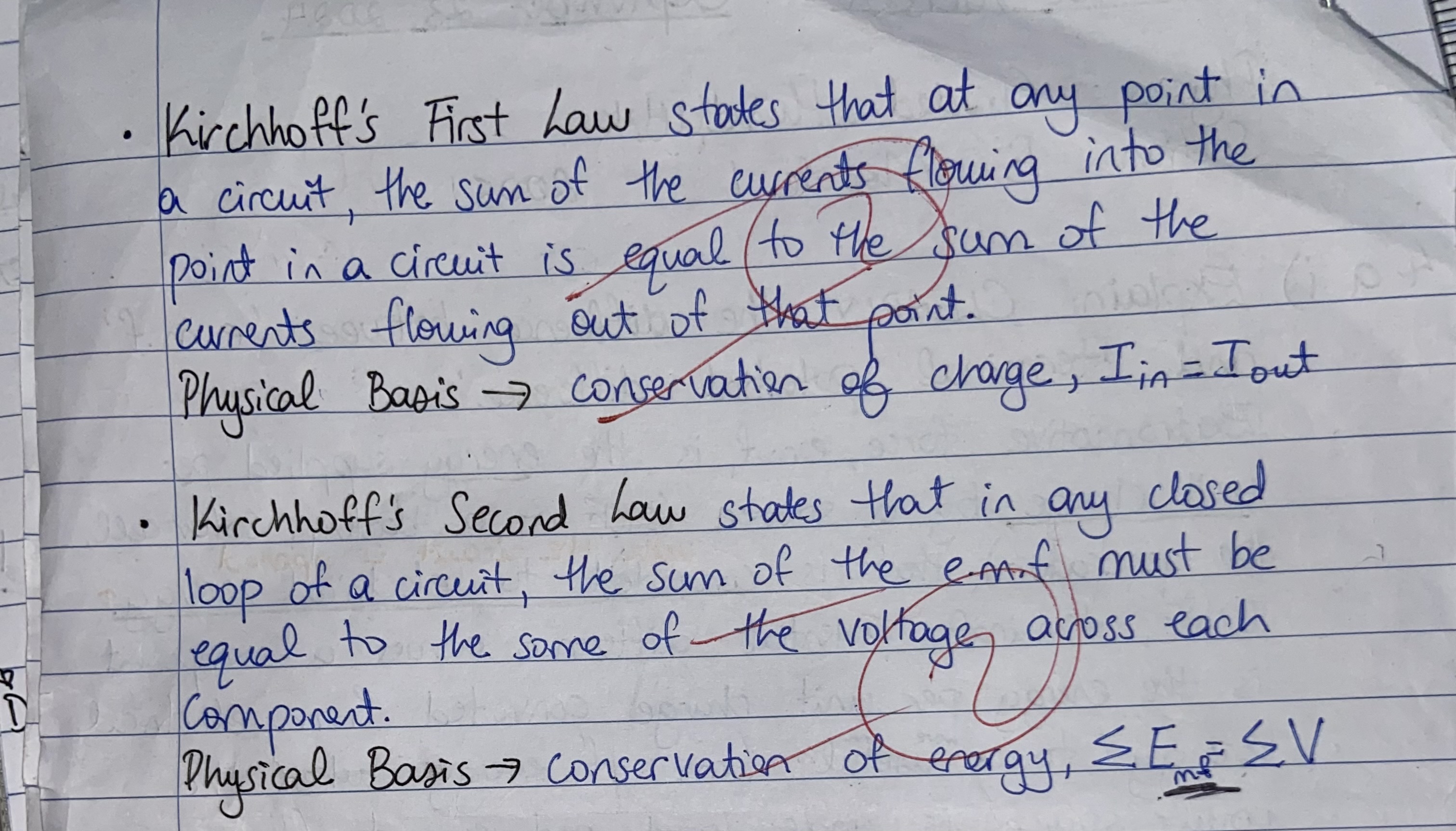
EMF equation

What is a galvanometer
A galvanometer is a tool that shows if a small electric current is flowing in a circuit.(often used in Wheatstone bridge)

What is a Wheatstone bridge
A Wheatstone bridge is a circuit (double potential divider) used to figure out an unknown resistance by comparing it with known resistors.
What is internal resistance
Internal resistance is the resistance inside a cell or power supply that opposes current flow
What is a potential divider
A potential divider is a circuit used to produce a small potential difference from a larger one.
Describe how to used a potential divider as a source of fixed or variable potential difference.
A potential divider uses two resistors in series across a voltage supply to produce fixed or variable output voltage.
To get a fixed potential difference, use two fixed resistors to provide an output voltage.
To get a variable potential difference, replace one resistor with a variable resistor (like a potentiometer), which allows the output voltage to be adjusted.
Derive the equation for resistors in series

Derive the equation for resistors in parallel

Derive the potential divider equation
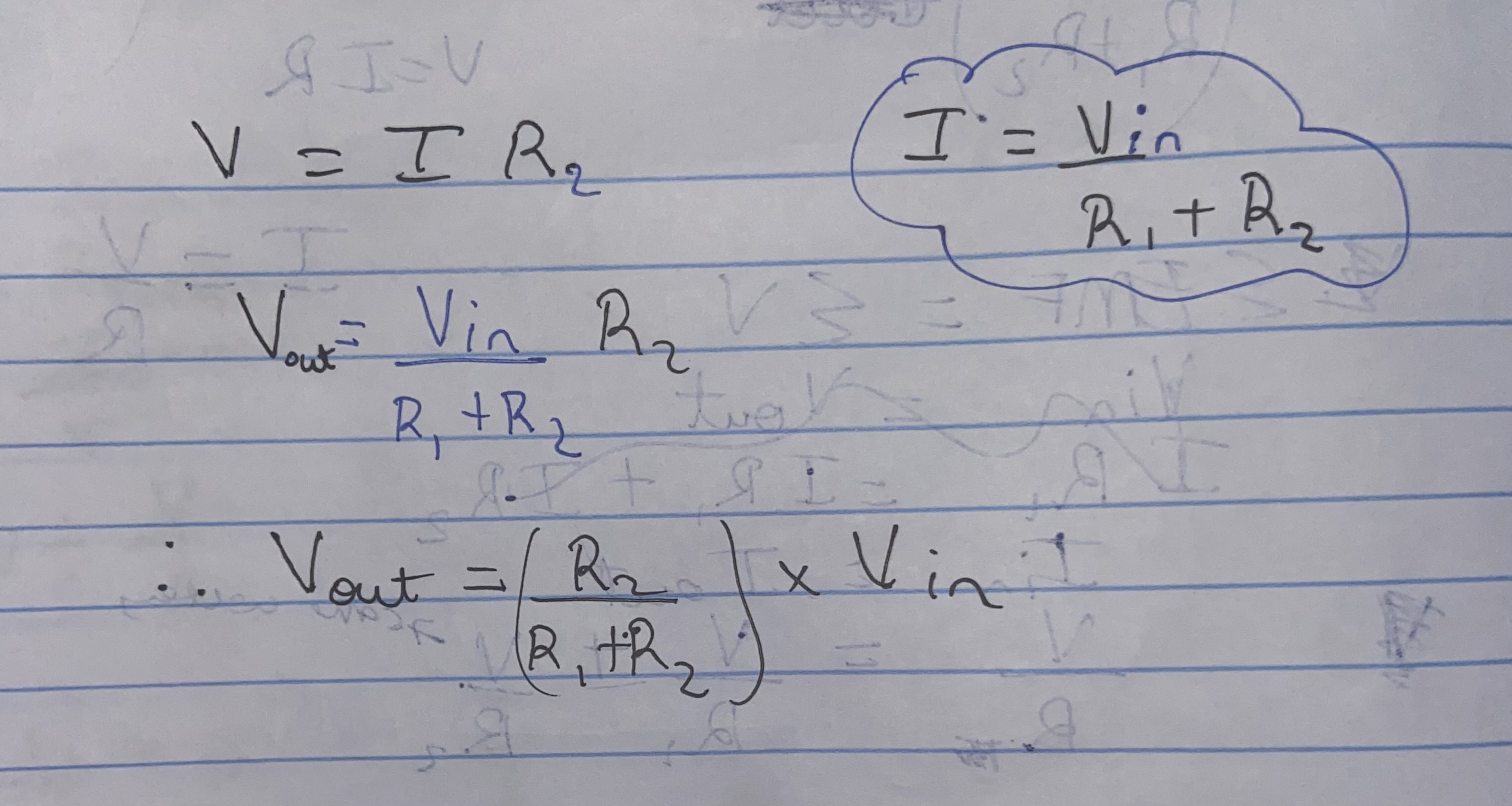
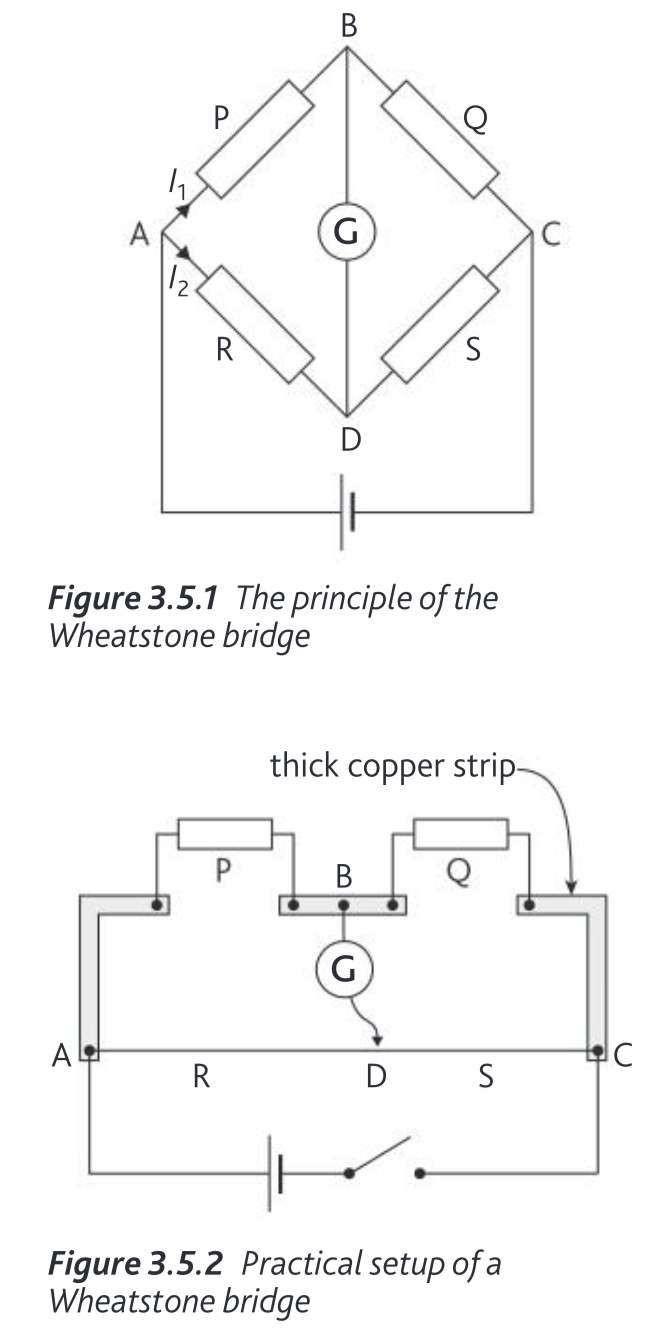
Wheatstone bridge equation

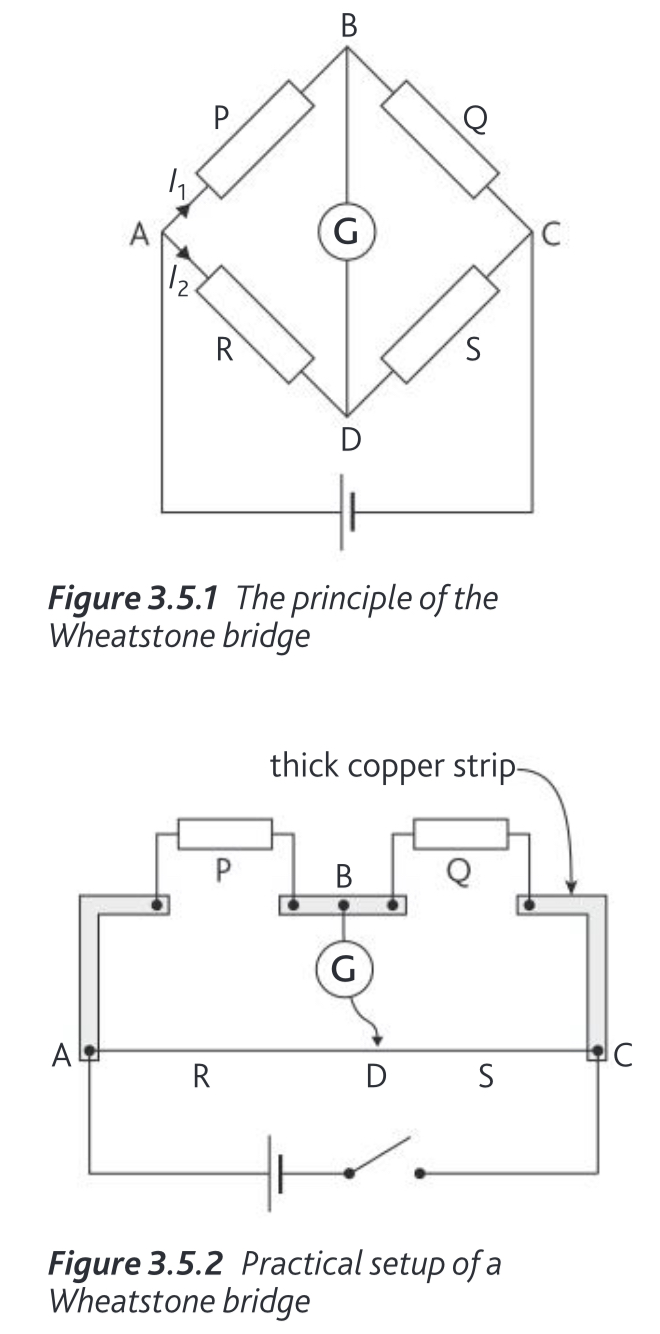
Steps on how to use Wheatstone bridge

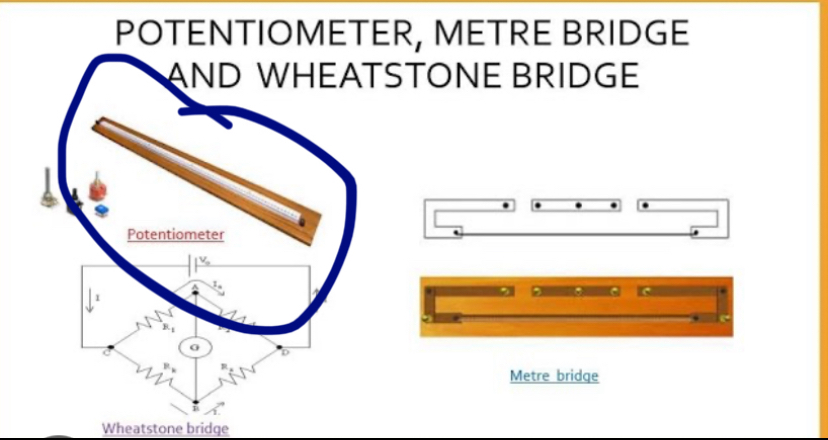
Potentiometer equation

What’s a potentiometer
A variable resistor used to measure unknown EMF or potential difference
(It allows you to adjust the resistance by turning a knob or sliding a control, which changes the output voltage.)
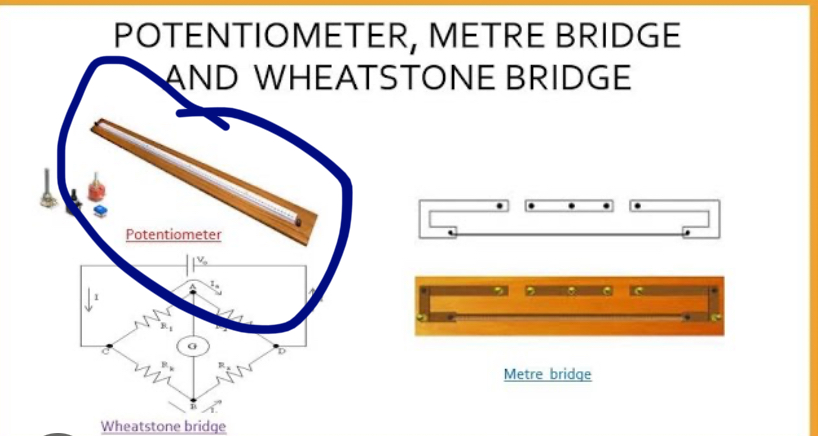
Advantages of using a potentiometer

Disadvantages of potentiometer

Define resistance and the ohm
Resistance - the measure of the opposition to the glow of current
Ohm - the unit for resistance
Ohm’s Law
For an ohmic conductor, the voltage across the conductor is directly proportional to the current flowing through it
Sketch an I-V graph for a filament lab
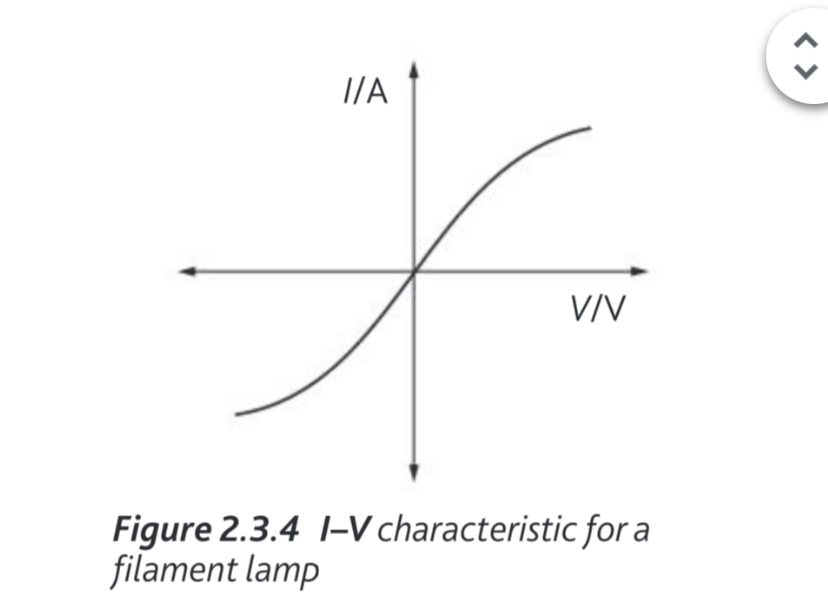
Sketch an I-V graph for a ohmic conductor
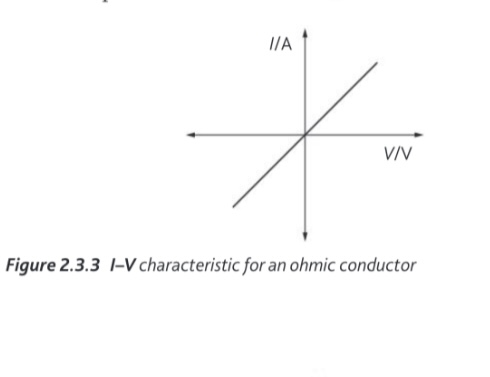
Sketch an I-V graph for a semiconductor diode
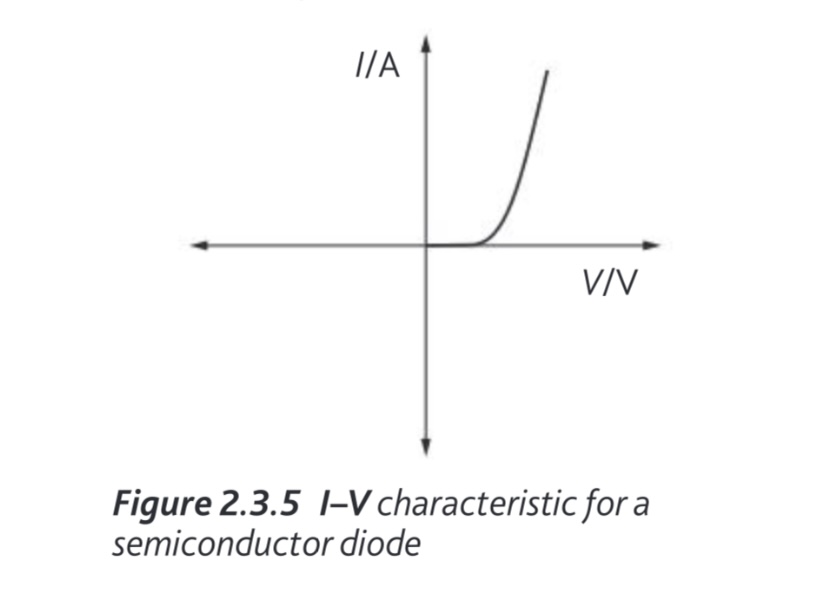
Define resistivity and state the equation and provide unit
Resistivity (ρ) is the resistance of a material per unit length and cross-sectional area.
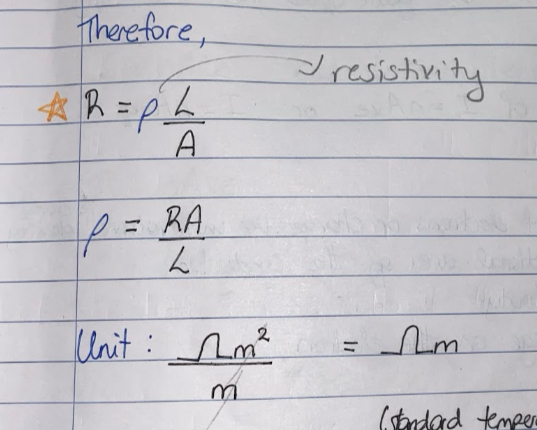
How to strengthen the resistance or a wire (and provide an expression for each)
Make the wire Longer
Make the wire thinner
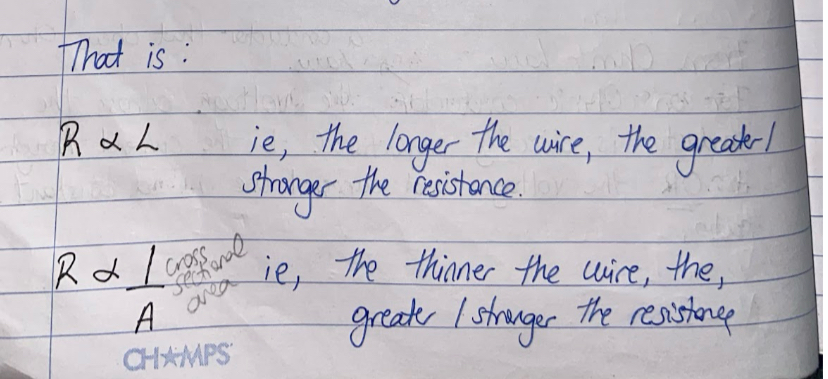
define Drift velocity
And derive an expression for it
Drift Velocity - mean amount of velocity of the electrons flowing through a conductor when an electric field is applied.
Expression for drift velocity:
( I nevAAA!!! )
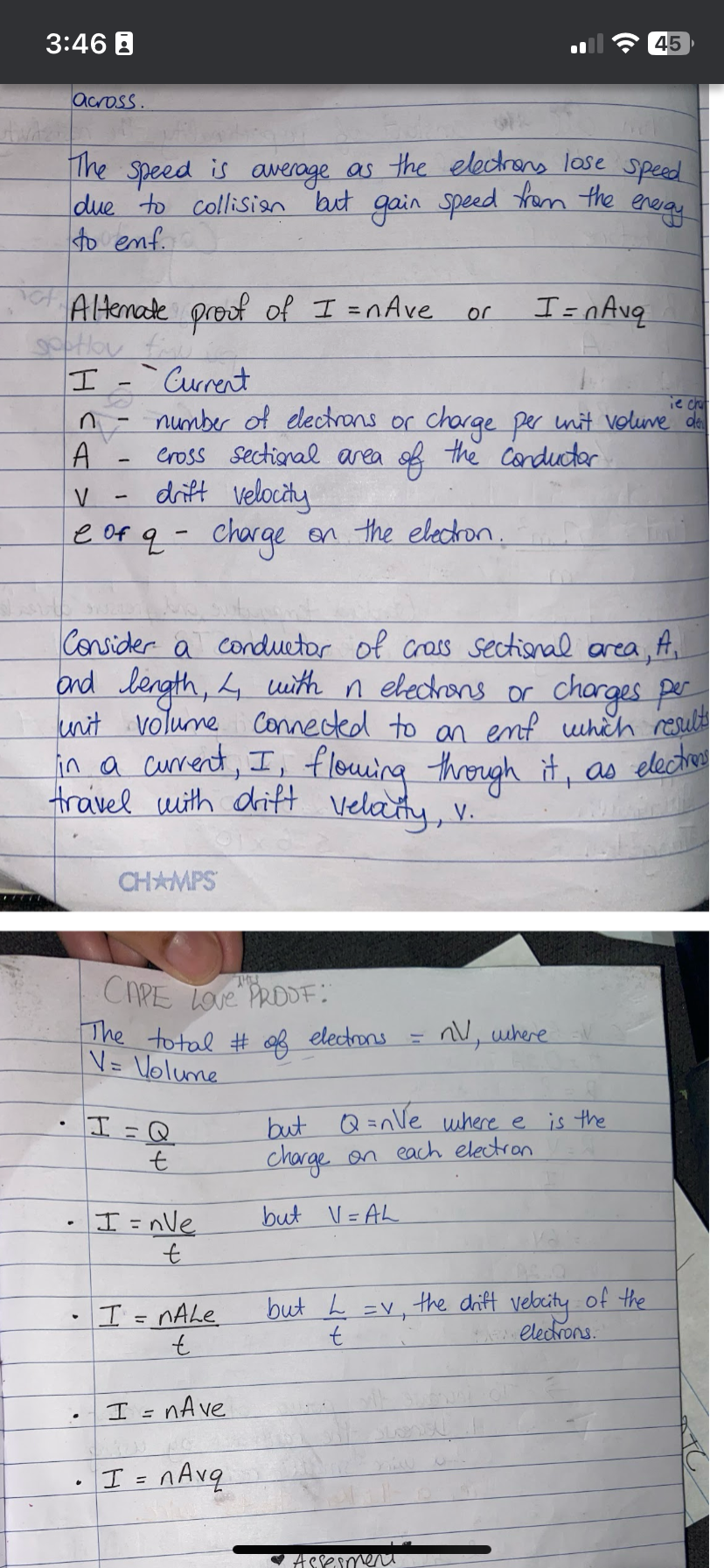

Derive: the equations from the picture
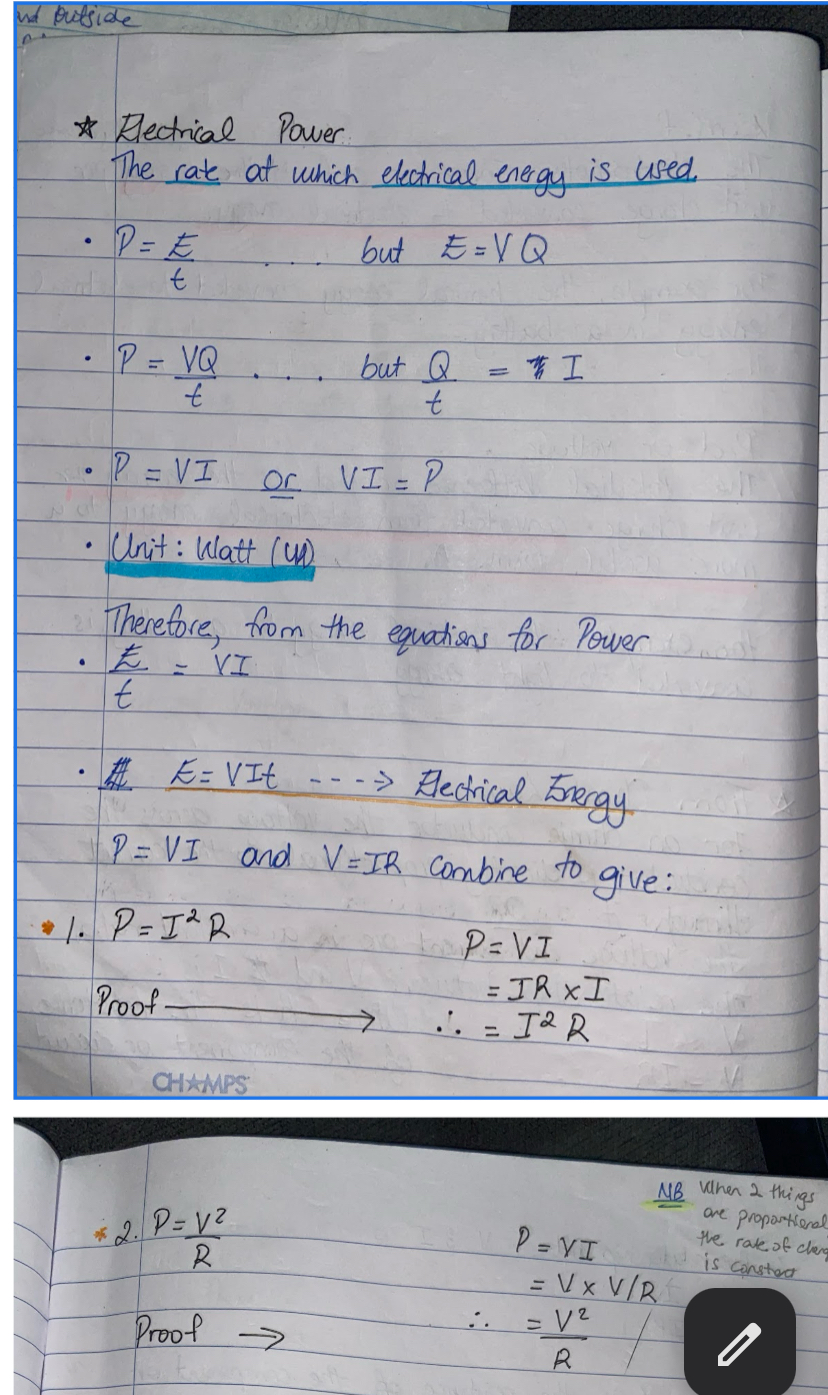
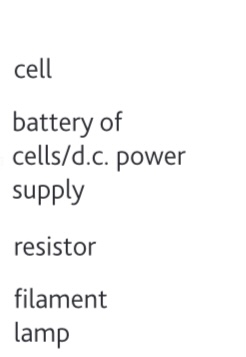
Draw the symbol for:


Draw the symbol for:
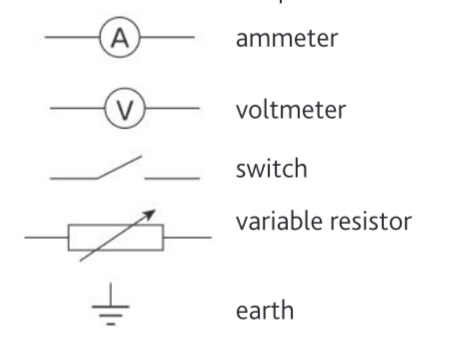
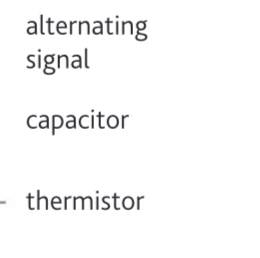
Draw the symbol for:
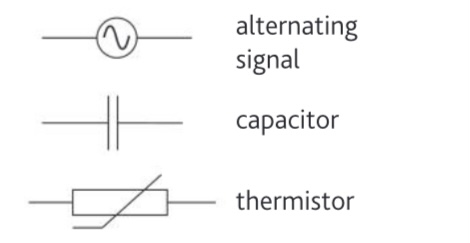
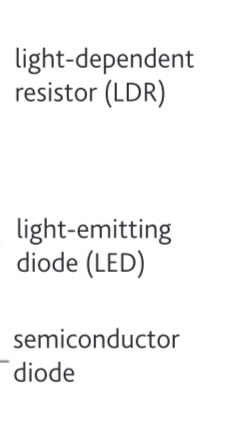
Draw the symbol for:
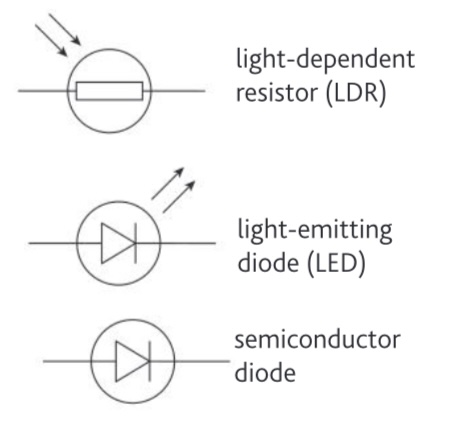
How many types of charges
There are two types of charges. Positive and Negative changes. Objects can also be neutrally charged
Explain charging by friction and give 3 examples
Charging by friction - making physical contact in motion with two oppositely charged objects to transfer/exchange charges. (Charge is conserved because no charge was lost)
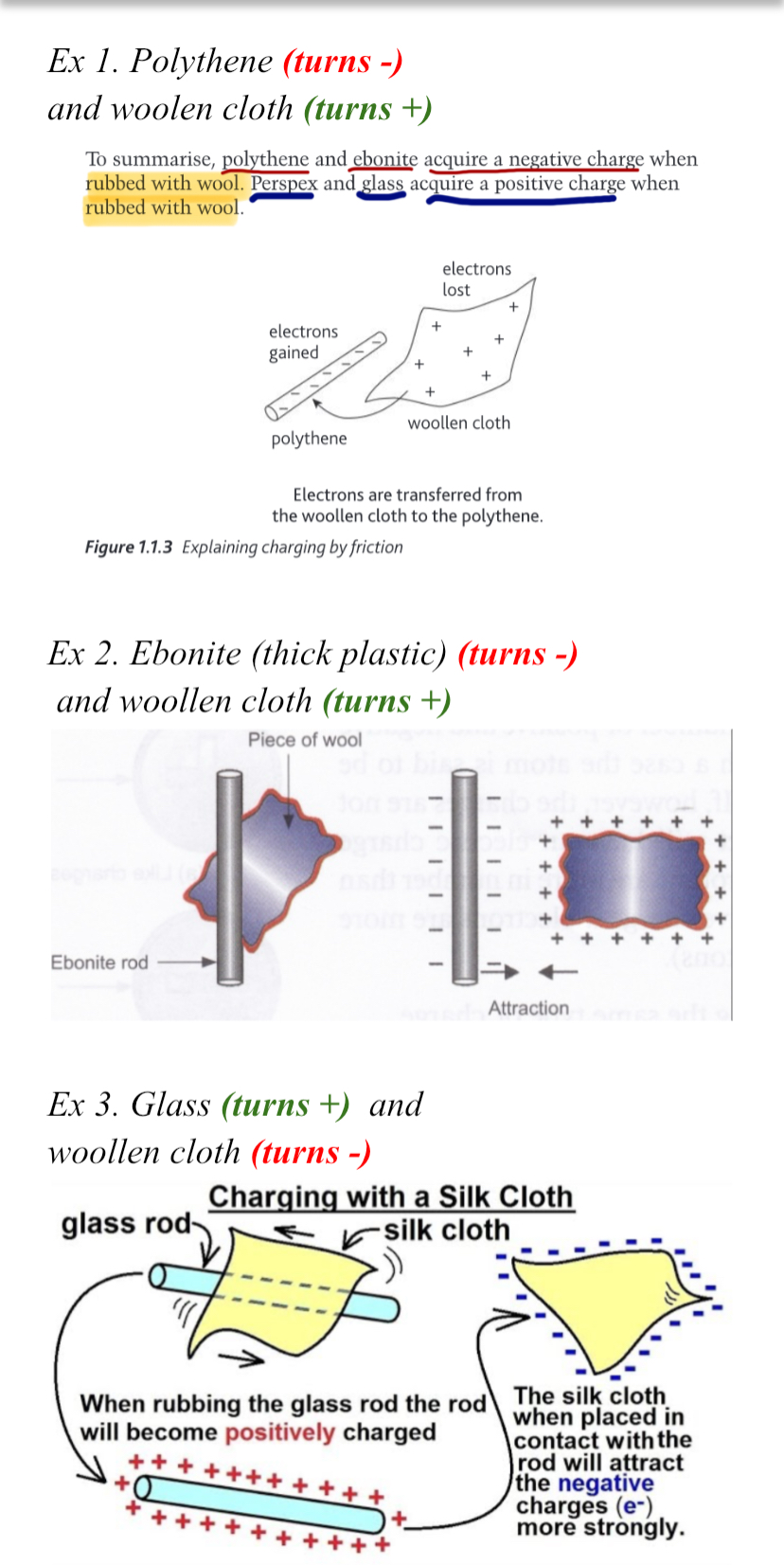
Explain charging by induction and give 3 examples
Charging by induction - bringing two neutrally charged objects into close proximity to make the charges in each object separate. One object is then grounded to release the negative charges to the ground. Charge is conserved because no charge was lost)
Like charges repel and unlike charges attract
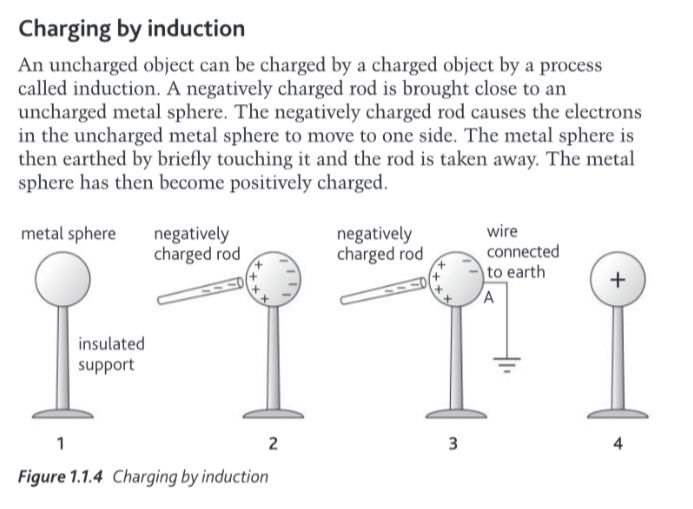
Distinguish amongst conductors, semiconductors and insulators
Conductors: materials that conduct electricity
Insulators: materials that are poor conductors of electricity
Semiconductors: in between
Explain electrostatic application in terms of
Electrostatic crop spraying
Electrostatic paint spraying
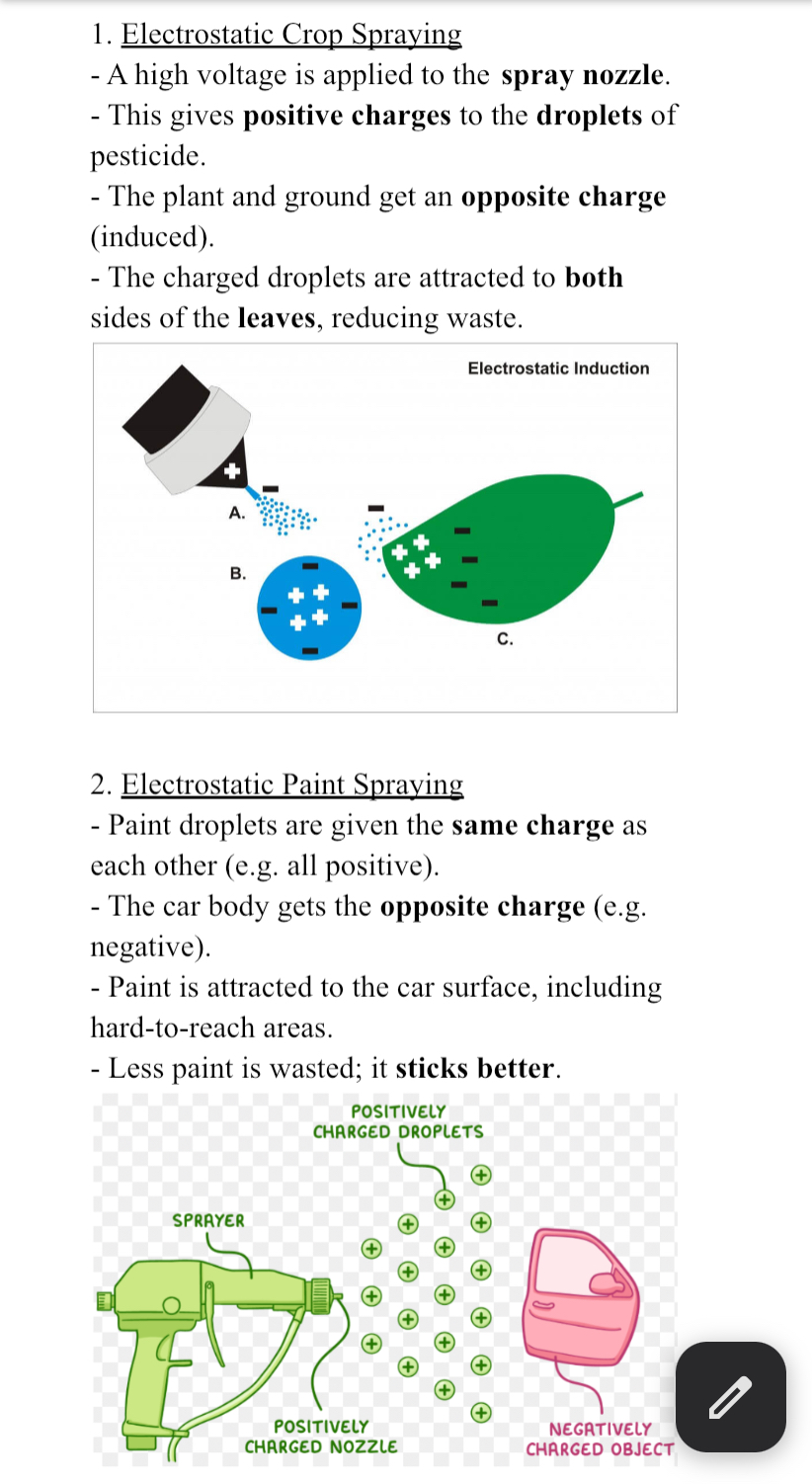
Explain electrostatic application in terms of
Photocopiers
Laser printer
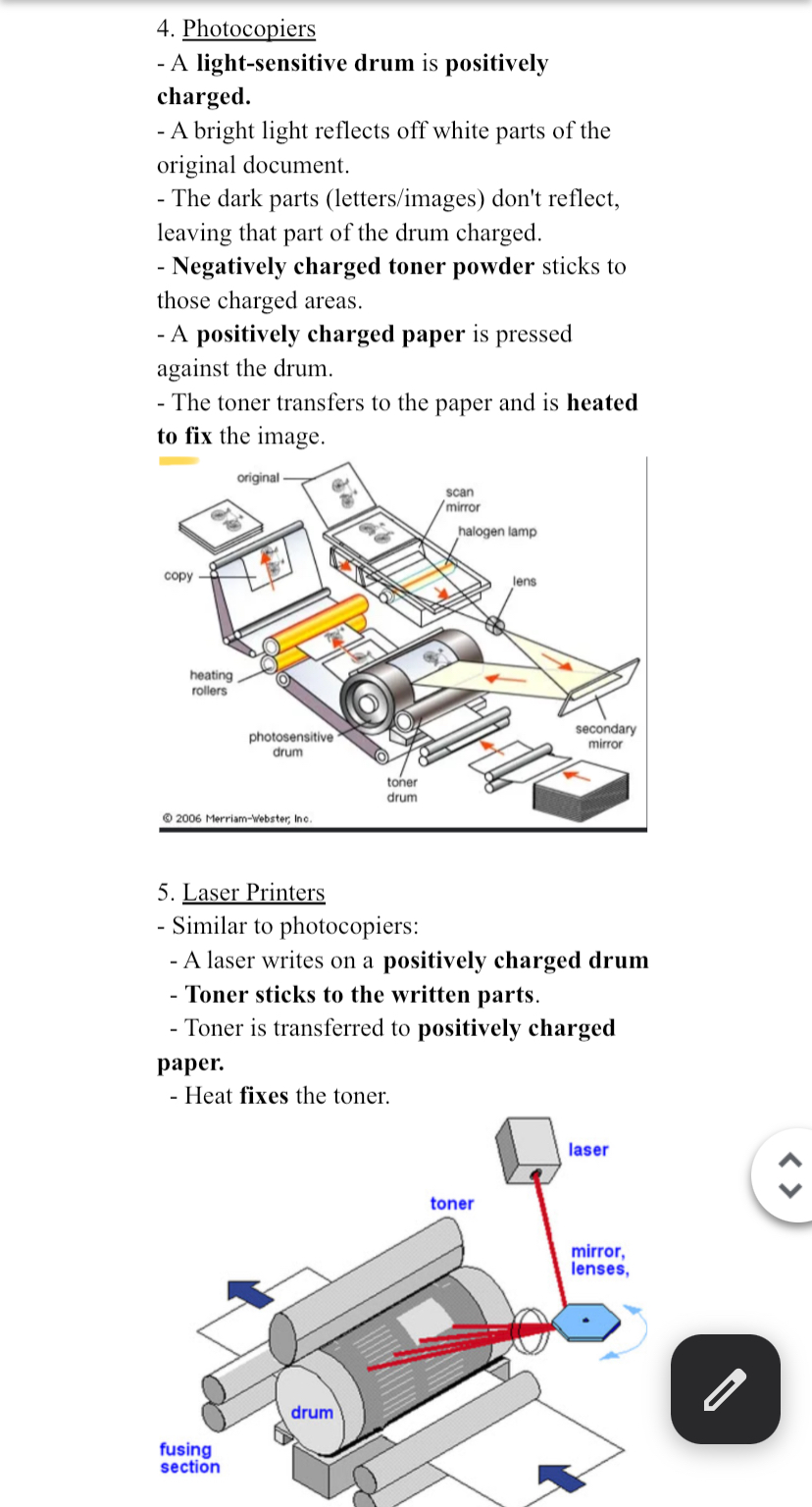
Explain electrostatic application in terms of
Dust extraction
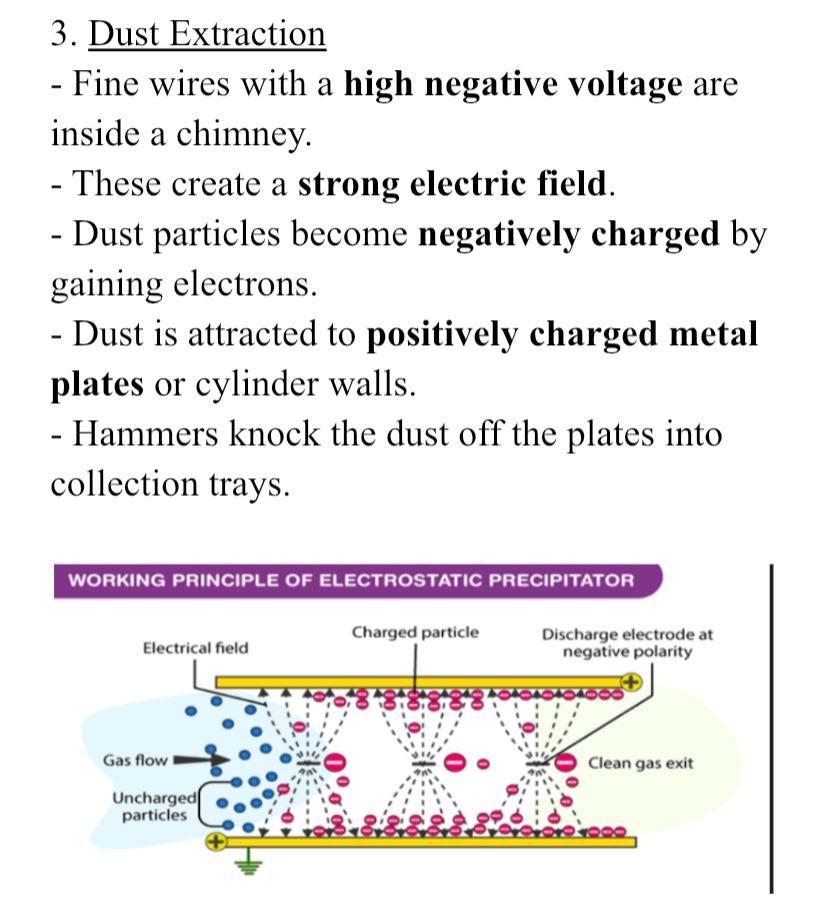
Discuss 3 Hazards causes by charging by friction
Static shocks: You may feel a shock when touching a metal object after walking on carpet (due to charge buildup).
Fuel explosions: Refueling planes can cause sparks from static electricity, which may ignite fuel.
Lightning:
- Thunderclouds build up huge static charges.
- When the charge is strong enough, it discharges as lightning, possibly damaging buildings or killing people.
- Lightning rods safely direct the charge into the ground.
- Electrostatic discharge (ESD): Can damage electronics or cause fires in flammable environments.